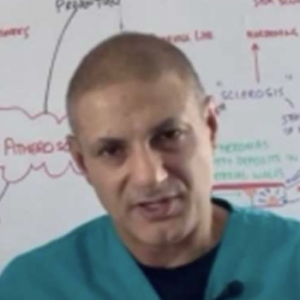Recent research has unveiled a troubling link between a deficiency in REM sleep and autism spectrum disorders (ASD). In this article, we look at what autism is, try to understand the connection between autism and sleep, and finally, how someone with autism can improve their sleep.
What is autism?
Autism is a neurological condition that commonly arises during early development, typically between the ages of two and three. While autism manifests in various forms, a fundamental characteristic is a challenge in social interaction.
Individuals with autism often find it difficult to engage or communicate with others in conventional ways. Key features of the condition include diminished eye contact, difficulty understanding social cues and norms like greetings or conversational turn-taking, restricted interests such as an intense focus on topics like trains, astronomy, or specific TV programs, repetitive behaviours like hand flapping, and heightened or reduced sensitivity to sensory stimuli such as noise or touch.1
How common is autism?
Autism spectrum disorder (ASD) is a relatively common condition, affecting approximately 1% to 1.5% of children. Boys are diagnosed with ASD three to five times more often than girls.
How is autism diagnosed?
Diagnosing the condition involves conducting interviews and structured activities with the child or adolescent to evaluate their communication skills, social interaction, and interactive play. Although ASD is usually diagnosed in early childhood, milder forms of the disorder can be identified at any age.
What causes autism?
Researchers still don’t have a thorough understanding of autism. Still, it’s thought to be caused by inappropriate wiring of the brain’s neurons in early developmental life. This is especially the case in the formation and number of synapses, which are the junctions between two neurons across which communication occurs. The formation or building of these links between neurons is called synaptogenesis.
It’s believed that the symptoms of autism stem from abnormal synaptogenesis. This process involves imbalances in synaptic connections, with fewer in specific brain regions and more in others.
Even though they may lack social skills, some individuals with autism can showcase remarkable talents, exemplified by Dustin Hoffman’s outstanding portrayal of Raymond Babbitt, an autistic savant, in the movie Rain Man.
This phenomenon underscores the unique neurological characteristics associated with autism spectrum disorders. Studies have revealed that people with ASD are better “systemisers” and, therefore, make better mathematicians.2
Autism and sleep
After discovering the link between autism and abnormal synaptogenesis, researchers studied whether individuals with autism had different sleep patterns compared to people without the condition. This was found to be the case in infants and young children displaying signs of autism or who had been diagnosed with the condition. These children demonstrated significant differences from standard sleeping patterns and total sleep duration.
Sleep problems are common among individuals with ASD. Approximately 60% to 86% of children with ASD experience sleep disturbances, which can show up as difficulties trying to get to sleep and frequently waking up during the night and waking up early.3
Research on sleep in adults with ASD is limited, but available studies indicate that sleep disturbances may persist into adulthood for some individuals. Poor sleep seems to exacerbate behavioural challenges commonly associated with ASD, leading to worsened social interactions and mood disorders. Additionally, inadequate sleep can increase feelings of anxiety, irritability, and aggression in individuals with ASD.4
Compared to children without the condition, those with ASD typically experience approximately 30 minutes less total sleep time per day, a longer sleep latency (i.e., it takes them longer to fall asleep), and decreased sleep efficiency. In other words, they spend more time awake in bed).5
Why do sleep problems occur in Autism Spectrum Disorder?
The exact cause of sleep issues in ASD remains unclear and is likely multifaceted, which is a posh way of saying there is a combination of factors involved, such as poor sleep hygiene, multiple poor health conditions, and biological factors. Abnormalities in melatonin levels have been observed as one potential biological factor, although this remains controversial.6
Melatonin and autism
Children with ASD, especially those who haven’t reached puberty, have been seen to exhibit a relative deficiency of melatonin or irregular timing of melatonin release. These abnormalities may contribute to sleep disturbances and disrupt circadian rhythms.7,8
Circadian rhythm and autism
Additionally, researchers have discovered that autistic children display weaker circadian rhythms compared to their non-autistic counterparts. Instead of the typical sharp increase in melatonin levels at night followed by a rapid decline during the day, autistic children appear to release less melatonin throughout the twenty-four-hour period.9 Biologically, it seems the distinction between day and night is less pronounced in autistic individuals, resulting in a weaker signal for regulating sleep-wake cycles. Furthermore, autistic children tend to experience less overall sleep. Consequently, during the night, children may not recognise the appropriate time to sleep, while in the morning, their bodies may not recognise the proper time to wake up.10,11
REM sleep and autism
When researchers began to study the sleep of autistic individuals, they found there was a significant shortage of Rapid Eye Movement (REM) sleep. Autistic individuals show a 30 to 50% deficit in the amount of REM sleep they get relative to children without autism.12
Why is this important? Well, it comes down to REM sleep’s role in building balanced synaptic connections in the developing brain. REM sleep is so essential to the developing brain that a foetus will ramp up its consumption of REM sleep to almost nine hours a day, while in the last week before birth, a lifetime high of 12 hours of REM sleep is reached.
REM sleep and the developing brain
The intricate formation of the brain and its various components occurs rapidly during the second and third trimesters of human development. Interestingly, this period coincides precisely with a significant increase in REM sleep duration. This correlation is not coincidental; rather, REM sleep is a crucial catalyst during this pivotal early stage of life. It’s the secret sauce that provides the environment in which the brain can build connections between neurons, a process called synaptogenesis.
During REM sleep, vibrant surges of electrical activity across the developing brain stimulate vigorous growth in neural pathways. These pathways are then covered by a rich array of synaptic terminals, like pink blossoms erupting from the bare branches of trees in spring.
REM encourages synaptogenesis
During synaptogenesis, the brain experiences a prolific neural connection formation phase fueled by the plentiful REM sleep available. The exuberant construction of neural pathways in the developing brain parallels the creation of an extensive road network in a country with a booming economy.
Remodelling the brain in NREM
However, these abundant times are fleeting, as any economist will attest. When times are hard, decisions must be made regarding allocating precious resources to maintain and enhance communication systems. Priority is given to areas that generate the most wealth for a country, such as London, the financial hub known for its vast communication networks of roads, tube, and rail. During tough times, projects aimed at connecting other parts of the country may be postponed or scaled back, exemplified by debates over projects like HS2.
Thus, we see a strengthening of communication systems in selected areas at the expense of others which are less used. Similarly, there is an initial fervour for establishing neural connections in the developing brain, similar to the construction boom in a growing metropolis. However, as the brain matures into adolescence, these connections undergo remodelling or sculpting to create a more efficient system. In the developing brain, this is reflected by a transition from REM to more time spent in NREM deep sleep.
Who would have thought that the dynamics of REM and NREM (Non-Rapid Eye movement) sleep offer insights into the economic principles behind the scaling back of HS2?
REM sleep abnormalities and autism
Just because researchers identified abnormal REM sleep patterns in autistic individuals, it doesn’t necessarily mean that one causes the other. Is deficient REM causing autism, or is it the other way around? However, when researchers selectively deprived an infant rat of REM sleep, it led to abnormal patterns of neural connectivity, or synaptogenesis, in the brain. Moreover, rats deprived of REM sleep during infancy go on to become socially withdrawn and isolated as adolescents and adults.13
Sleep a diagnostic tool for autism
Despite the uncertainties of the causalities between REM sleep and autism, researchers are looking to track sleep abnormalities to hopefully develop a new diagnostic tool for the early detection of autism.
Improving sleep in autism
Establishing good sleep hygiene is considered crucial for children with ASD. Bedtime routines with cues, such as changing into pyjamas and brushing teeth, are important.
Electronic devices in the bedroom are generally linked to shorter sleep durations in children and adolescents. Specifically, among boys with ASD, playing video games is associated with reduced sleep. These devices emit blue light and add to the delayed release of melatonin, so try to limit the availability of electronic gadgets in the bedroom.
Finally, given what has been mentioned regarding the association of melatonin with ASD, low doses of melatonin can be tried to help manage sleep disturbances.
References
- American Psychiatric Association. Diagnostic and Statistical Manual of Mental Disorders. Arlington, VA: American Psychiatric Association;2013.
- Baron-Cohen, S., Wheelwright, S., Burtenshaw, A. and Hobson, E., 2007. Mathematical talent is linked to autism. Human nature, 18, pp.125-131.
- Souders, M.C., Zavodny, S., Eriksen, W., Sinko, R., Connell, J., Kerns, C., Schaaf, R. and Pinto-Martin, J., 2017. Sleep in children with autism spectrum disorder. Current Psychiatry Reports, 19, pp.1-17.
- Johnson, C.R., Smith, T., DeMand, A., Lecavalier, L., Evans, V., Gurka, M., Swiezy, N., Bearss, K. and Scahill, L., 2018. Exploring sleep quality of young children with autism spectrum disorder and disruptive behaviors. Sleep medicine, 44, pp.61-66.
- Elrod, M.G. and Hood, B.S., 2015. Sleep differences among children with autism spectrum disorders and typically developing peers: a meta-analysis. Journal of Developmental & Behavioral Pediatrics, 36(3), pp.166-177.
- Veatch, O.J., Goldman, S.E., Adkins, K.W. and Malow, B.A., 2015. Melatonin in children with autism spectrum disorders: how does the evidence fit together?. Journal of Nature and Science, 1(7), p.e125.
- Kulman, G., Lissoni, P., Rovelli, F., Roselli, M.G., Brivio, F. and Sequeri, P., 2000. Evidence of pineal endocrine hypofunction in autistic children. Neuroendocrinology Letters, 21(1), pp.31-34.
- Wu, Z.Y., Zou, J.J., Wang, Q.X., Naveed, M., Bao, H.N., Wang, W., Fukunaga, K. and Han, F., 2020. Autism spectrum disorder (ASD): disturbance of the melatonin system and its implications. biomedicine & Pharmacotherapy, 130, p.110496.
- Cohen, S., Conduit, R., Lockley, S.W., Rajaratnam, S.M. and Cornish, K.M., 2014. The relationship between sleep and behavior in autism spectrum disorder (ASD): a review. Journal of neurodevelopmental disorders, 6, pp.1-10.
- Abdul, F., Sreenivas, N., Kommu, J.V.S., Banerjee, M., Berk, M., Maes, M., Leboyer, M. and Debnath, M., 2022. Disruption of circadian rhythm and risk of autism spectrum disorder: role of immune-inflammatory, oxidative stress, metabolic and neurotransmitter pathways. Reviews in the Neurosciences, 33(1), pp.93-109.
- Glickman, G., 2010. Circadian rhythms and sleep in children with autism. Neuroscience & Biobehavioral Reviews, 34(5), pp.755-768.
- Buckley, A.W., Rodriguez, A.J., Jennison, K., Buckley, J., Thurm, A., Sato, S. and Swedo, S., 2010. Rapid eye movement sleep percentage in children with autism compared with children with developmental delay and typical development. Archives of pediatrics & adolescent medicine, 164(11), pp.1032-1037.
- Vogel, G. and Hagler, M., 1996. Effects of neonatally administered iprindole on adult behaviors of rats. Pharmacology Biochemistry and Behavior, 55(1), pp.157-161.


